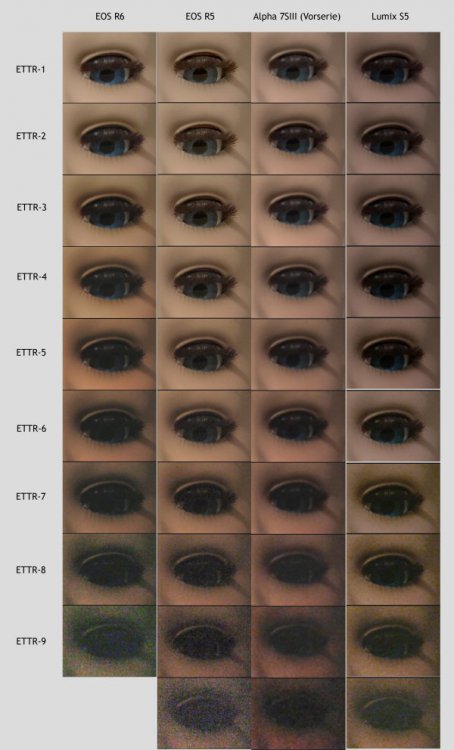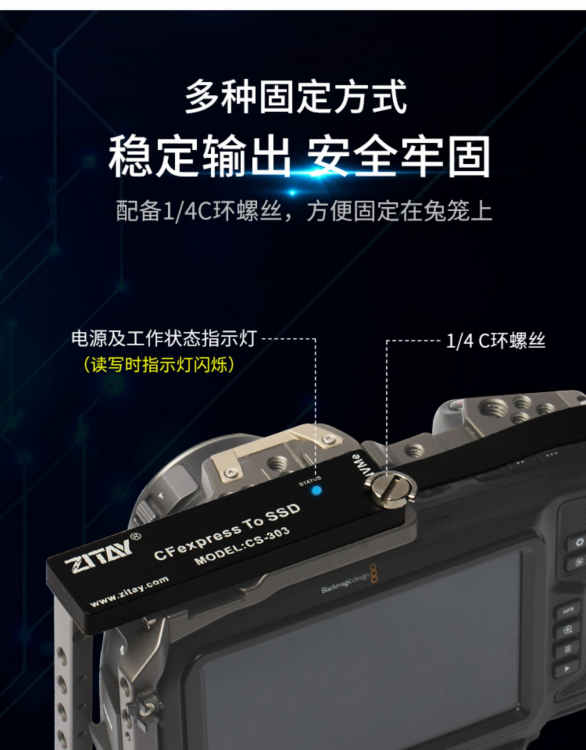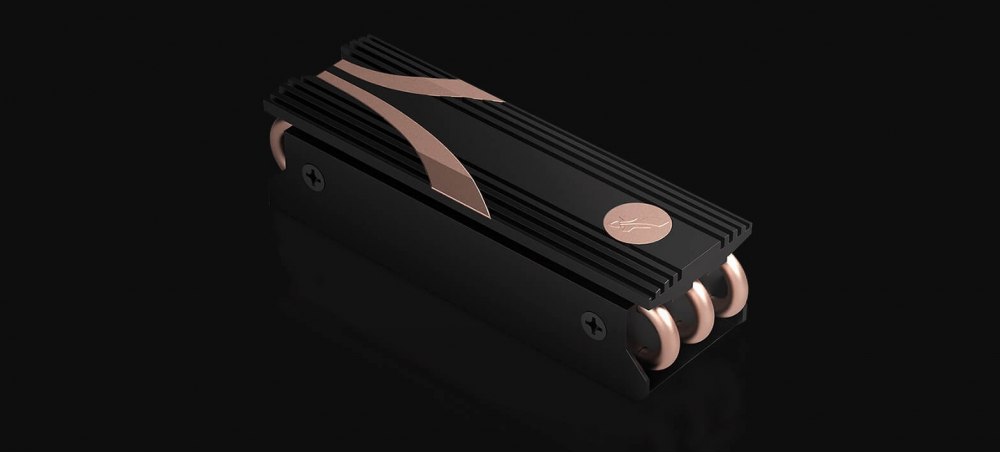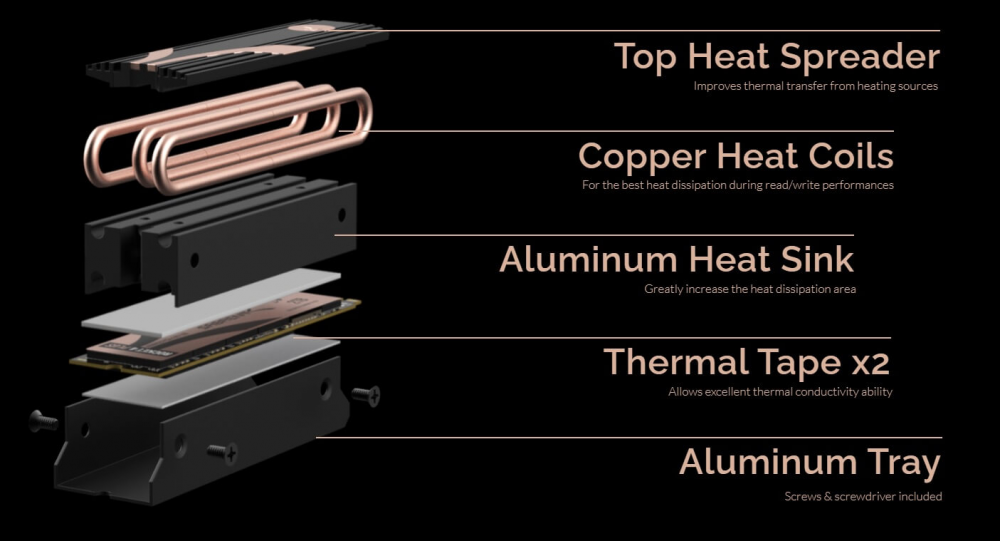Leaderboard
Popular Content
Showing content with the highest reputation on 09/19/2020 in all areas
-
I was the same when I got mine. I don't understand how people can enjoy using those modes... Maybe if you had an optical view finder it could be fun. Now though, I never shoot more than the 1080 Rewire option. It's non-crop (other than the aspect ratio) and realtime live view. If you shoot this way, it's basically the og BMPCC with a bigger sensor and much better audio / battery. If you run through MLV APP and convert each clips to DNG frames, there's barely even any extra steps in post. As far as my test of the new builds goes, the live view in the higher resolutions and crops is getting to realtime, but they're refining it. Give it a few weeks and come back to it.3 points
-

Magic Lantern 3.3k 16:9 RAW now with real time preview
Rivhop and one other reacted to hyalinejim for a topic
https://www.magiclantern.fm/forum/index.php?topic=23041.msg216899#msg216899 Background: user TheBilalFakhouri has unlocked correctly framed real time preview for EOS M and Danne has ported it to 5D3. Previously, Magic Lantern high res modes had a preview image that had either correct framing but in unusably slow frame rate black and white or real time colour preview with wrong framing. Now, however there is high res, real time preview with correct framing. Kind of fun to try if you already own one of the supported cams 😁2 points -
Some demo footage of the Quad Lock functionality will be forthcoming later next week, likely Friday.2 points
-
how much time wasted in useless chatter...2 points
-
I ended up picking up a voigtlander 40mm f/1.4. not 50mm but close enough.1 point
-
Canon Cinema EOS C70 - Ah that explains it then!
BenEricson reacted to ntblowz for a topic
Rumored price is $6299, dont think it will cost $4500 when C300III still cost over $10K The one with C200 sensor will cost $3499 though It should have rear screen, that for right is the mechanic for filppy screen1 point -

Sony A7S III
Beritar reacted to Andrew Reid for a topic
It's the youtube shit content merry-go-round again. May as well not talk. Just carry on pressing CTRL-P1 point -
Luckily for Sony, they have some popular Youtubers with biased reviews.1 point
-
Canon Cinema EOS C70 - Ah that explains it then!
Video Hummus reacted to currensheldon for a topic
Yea just saw this as well. Pretty tempting over something like the S1H, which I have and love, because of the AF, internal NDs, and 120fps in 4k. And that C300 III sensor is sweet (though, so is the S1Hs). But, knowing Canon, this thing won't have timecode, which has been huge for me with the S1H and hard to not have once you've had it. Plus having full-frame and IBIS is excellent. Hoping Panasonic updates the S1H with 120fps in 4k. Seems like they have to to compete in the new R5, A7sIII, and C70 market - unless they're aiming to put out a S2H soon (which would be sort of crazy soon) or an EVA-2 which will be closer to the C70 in size, price, and market.1 point -
Yes its pure speculation on my part. The fact that we don’t know why is strange in itself, don’t you think? Olympus is an old player, perhaps they had their finger in the pie and hence had some grandfathered in PDAF use license...who knows. And just to be clear, I’m not giving Panasonic a pass on DfD. I want more reliable autofocus. PDAF would give it to them right now so I am advocating they do that to fix their AF woes and camera sales. Now, if Olympus or JIP could somehow get 10-bit in their camera with their pleasing color science and partner with Panasonic to get good codec and video processing and a proper LOG format then they would have something compelling. They have the lenses. They have PDAF. They have good SooC color. They have the weather sealing and body design. They don’t have good menus (complete shite imo). They have lots of ingredients. Someone just needs to back the pie.1 point
-
Not to mention Leica has said they “don’t have PDAF available to them” which makes me believe Sony has tight restrictions on PDAF patents. And the fact that other, old school camera companies such as Nikon, Fuji, Olympus have it has more to do with weird patent and technology agreements among those companies and perhaps Minolta in the past (or whoever acquired the original patent portfolio for it). Panasonic is a new comer in the camera industry, by a long shot, compared to those companies. And leica is a Germany camera competitor and we all know the Japanese vs German imaging battle that went on for years. Japan won the majority of the market. So I’m more included to believe that Panasonic is in the same boat as Leica and that they “don’t have PDAF available to them” so they built upon contrast based system. I’m not sure there are other ways to do focus except with lasers, or IR, or ultrasonic projection and apparently Panasonic doesn’t like those methods. It’s a mystery and would make a great “industry investigative story” documentary.1 point
-

Is full frame really necessary?
tupp reacted to hyalinejim for a topic
On the contrary, the last few pages of discussion gets right to the heart of the question raised. And I think many people would agree that the answer is: The necessity or desirability of a format size depend on whether the lenses available for that format will give you the visual qualities that you value.1 point -
Hmm, tastiest of all threads! Besides the Eos M Super8 one or the lens thread or the BW on 8bit, of course.:) In the same league as the best of Eoshd classics. Anyway, such a fun thread. I love the these kind of youtube links, to some cool characters who provide great knowledge in an enjoyable way. Zeeks channel is really cool and fun! Thanks guys, for such great reading and viewing pleasures, nerdom and education!1 point
-
I think Sony is quite aggressive with NR on a7S III, wonder is 12MP just too low res? Panasonic really tweaked their 24MP really well, at expense of no PDAF on the sensor.1 point
-

Is full frame really necessary?
hyalinejim reacted to tupp for a topic
I'll just repeat what has been mentioned in this thread. The lenses for the smaller formats have to use larger apertures to match the DOF of larger format lenses. So, if one is shooting large format with shallow DOF (as in the above photo), matching that DOF with a with a smaller format lens will require its aperture to be wide open, which not only affects the overall sharpness (As you surmised), but it can also produce a difference in the relative sharpness between center and edges of the frame. This characteristic with the smaller format lessens as the aperture is reduced. The above 8"x10" photo was shot with a roughly 600mm lens (not sure on the aperture), and the closet lens match that I could find in a smaller format is the Nokton 42.5mm f0.95 for M4/3. Here is a test of that lens set at f.0.95 that not quite as close/tight as the above photo, but it gives a rough idea of how it might behave close and wide open. It doesn't seem as sharp wide open as it does at smaller apertures, and, unfortunately, the DOF isn't quite shallow enough to match that of the above 8"x10" lens. In addition, at wider apertures, there generally seems to be a faster transition from sharp to soft at the rear DOF limit on lenses made for larger formats. This quality might relate to why the plane of focus seems more solid, more well-defined and flatter on larger formats. Also, the softness/bokeh outside of the DOF seems cleaner and less mushy. Here is a photo shot with an 8x10 camera that shows that shows a solid, flat focus plane (although the lens appears to be swung slightly to the right), with the subject nicely separating from the clean and not too mushy background.1 point -

Is full frame really necessary?
tupp reacted to hyalinejim for a topic
Can you link to those posts? I'm still no clearer on what the differences in DOF rendering due to large/small format lenses actually looks like in an image.1 point -
Of course he did. But if you use the same optics in different formats you get the same result...it is not the format that makes the difference it is the lenses. To get an exact match to satisfy everyone, You would need to firstly pick your cameras of different formats and get the EXACT crop factor. Next you need a lens for one format. You would need to know the actual focal length (not just the marked focal length), You would need the diameter and could then work out the exact f stop. Using the crop factor to get an exact match, you would then need to do the same for the second format. You will also probably need to have the exact same lens formula though to get the same T stop (and take away any possibility of being a difference for other reasons). Yeah, it probably IS possible (maybe even easy for some). I could not do it in a lifetime though and again, beyond being a academic exercise, what is the point? It would HAVE to be done this way because otherwise some will point out (often tiny) differences but those differences . So, unless you (or someone else) does THAT, I will always accept that the theory matches the practice and to date, all tests have satisfied me they do. Are there ANY tests that have been done matching equipment EXACTLY?1 point
-
Most of the test parameters are given in the second half of this post from earlier in this thread. The format related properties are inherent in their optics, but the format and its optics are married to each other in regards to the look/sharpness. I agree that a controlled test should reveal general differences in optics for made for different formats. No. The problem with the tests are not their degree of rigor -- the problem is that every DOF test presented so far completely misses the point of what it is that is being tested. If one is testing DOF, it is sort of necessary to show the actual DOF. Instead, almost all such tests so far have merely shown the subject and an arbitrarily soft background at some arbitrary distance. Here is the typical set-up that we see in these comparisons; camera >> AIR >> sharp subject >> AIR >> soft background The limits of the DOF invariably are located in the "AIR" where there is no object nor surface visible to show the location nor the transitional character of those important limits. So, instead of testing the DOF, these comparisons actually just show how closely the tester can match the soft background using math along with the aperture markings on the lens. Usually, these tests also suffer other significant mistakes, such as in-camera sharpening, using zoom lenses, using wide lenses with deep DOF, etc. Additionally, the "soft background" in most of these tests is usually a wall or some other obstruction, beyond which no detail nor focus falloff is visible. Obviously, the foreground limit of DOF is important in DOF tests, because that limit is a major element that determines the DOF. In addition, the transitional characteristic of the foreground limit and the character of the softness beyond that frontA limit are both crucial to a lot of cinematography. For instance, consider any focus rack from far to near (or vice versa). When the camera is focused on the distant subject, the look of the soft near subject is determined by the DOF. In regards to Yedlin's test images showing the same elements characteristics as those in the 8"x10" photo that I linked above, there is one important and conspicuous difference -- the 8"x10" image shows the rear DOF limit and its distinctive transitional character quite clearly, while the rear DOF limit in Yedlin's shots are lost in the air. And, again, Yedlin used wider lenses with a deeper DOF. Not so with my linked image. Yes. The parameters are: Use dramatically different sized formats (with their corresponding optics); Use a continuously visible surface (preferably ruled) or a row of uniform objects that starts far in front of the subject and that recedes far behind the subject; Use narrow lenses; Use a shallow DOF; First set the DOF of the smaller format, then match by eye the DOF of the larger format.1 point
-
Sony A7S III
Thomas Hill reacted to PannySVHS for a topic
@ade towell Actually Lumix S5 is a real winner. When I tested the 8bit codecs of the S1, there was no mushyness whatsoever at high isos in extreme low (no) light situations. a few tiny Artefacts became visible in the shadows at no light. Interesting enough the super slim 75mbit h265 codec had grain in these situations, on the contrary it breaks apart on evenly and well lit plain surfaces. So I have been super impressed. Still don´t have the Vlog update, because I dont know if Panasonic will give it to us for free very soon. Would be a bit of wasted 200 USD then. S1, no mushyness in the shadows in no light situations, but grain. "No light" what a term for photography.:) S5 with Vlog has now been tested and it is performing the best compared to R5,6, A7siii, the latter one the worst. S5 is an image quality monster. Hard to believe they did it. Cinema quality in a 150mbit codec. Panasonic needs to promote it better. They can ask me being an ambassador. Here I come @andy lee :) Check out Andrews friends from slashcam de and put it through the translator or check out the image.: https://www.slashcam.de/images/texte/1974-300Prozent_Auge-300Prozent_Auge.jpg1 point -
Interesting test about the R5/R6/A7SIII/S5 dynamic range ... https://www.slashcam.de/artikel/Test/Der-Dynamikumfang-von-Canon-EOS-R5---R6--Panasonic-S5-und-Sony-A7SIII-im-Vergleich--Erkenntnisse---Fazit.html#Fazit1 point
-
In my opinion, here is what GoPro needs to make next year to truly stand out and offer a worthwhile upgrade: - GoPro X. Bigger sensor than the 9 and 4K120p along with 10 bits recording. - Gopro Max 2. Dual 8K30P sensor that gives a 4K image when you use it in Hero mode. It's like having a normal GoPro in every direction, no need to frame. And a mode that gives 2.7K60P when in hero mode (unlike FHD today). Same sensor size as today to make all that possible.1 point
-
I feel like you are kind of moving the goalposts. This guy has a use case where he has shot hundreds of shots on cameras with all kinds of film backs (for camera comparisons), and somehow this does not count because his lenses are too wide? This is based on real-world experience with everything from an IMAX down to a super 35 camera. He even admits in the article that his matching is not perfect due to practical limitations (t-stops and f-stops not aligning, lenses not matching exactly to their equivalent counterparts, etc.), but his argument is that the likeness between shots is so convincing and consistent that the sensor size obviously does not play a role in the actual image, and that any perceived difference is due to bias or particular (non image circle-related) lens characteristics, not due to the size of the film back. In fact, where you have been previously arguing about recognizing a larger format due to increased lens blur (in your examples where you are circling a number of shots), the Alexa 65 actually seems to have slightly LESS lens blur in the examples provided by Steve Yedlin, likely due to my aforementioned reasons. This, again, seems to provide an argument that any perceived differences are more likely to be due to individual lens characteristiscs or other uncontrolled variables which are not related to the film back size. EDIT: I hope this does not come off as argumentative, as I do appreciate -and enjoy- the discussion!1 point
-
GoPro Hero 9 Black Coming Soon with 5K30/4K60
Juank reacted to newfoundmass for a topic
Honestly the GoPro era feels dead. These past couple of releases haven't interested me, both because of how over saturated the action camera market became and because of their yearly release schedule. They've ceased innovating. Yes, the stabilization is incredible, but each iteration is a modest upgrade over the last. While they're focusing on media mods, a company like Insta360 is innovating in much better ways in my opinion. I honestly feel, at this point, most people would be better off buying used or one of the cameras released by DJI or Insta360 instead. Hell, for a lot of people one of those cheaper ones from Yi would be sufficient if your primary use for an action camera is putting it in a tight / risky environment, like me.1 point -

Sony A7c
Juank reacted to Andrew Reid for a topic
On the UK Sony site the small print is: "The α7C is the smallest and lightest full-frame digital interchangeable-lens camera with optical in-body image stabilisation" A weird confusion going on in the heads of marketing people there of optical IS and mechanical IBIS.1 point -
Yes, that faster performance won't affect the current needs except for two reasons IMHO I'd sincerely love to see some other experts to comment without secondary interpretations : D Extra use other than R5 (once again, my needs are not yours and vice versa) as future proof as well but I wonder if it won't benefit in terms of overheating...? Well, thanks for your heads-up rolling in private messages. Once public, here I am. No offense taken up there. No pun intended to people we cannot have a single idea who they are (I guess this works both ways or even multilayered when we have many users around, distinct experiences, core business and so on) because as said, the world is yet too big despite this damned pandemic and we ain't all Hollywood characters : D Yup, I found it strange that (external) quote and such level of certainty from people I've never heard about and from my lack of background on that I let it hear from people with more knowledge than myself. As simple as that. Not necessarily to endorse anything I can't stand for the same reasons I see any activity or craft on earth as a cooperative process in the same field. Not else. Misunderstandings happen (non-native language speakers, etc) but they stop to occur in all the goodwill when we see some general words strictly in a literal sense if we refuse to admit them or that we can collaborate for information and healthy fun, any other?1 point
-
Dang, now Eoshd is talking again. Beautiful nerdy threads. Keep em coming! I want some underdog beauty: GH4 or FZ2000 with external 10bit. GH4 with a YAWG and battery solution. Software mods, hardware mods, shitty rigs, super rigs- keep em coming, the happy bee is humming! EOS M super 8 raw thread was one of my favorites of the last two years. Would love people to shoot some recreational short pieces with these nerds´dream cams. Unfortunately I have not done the walk yet to be called a nerd. Maybe if I get to mod my Konica mount zoom lens to EF. Edit: that zeek youtube link above seems like a nerds entertainment dream. Thank you very much @stephen1 point
-
Yes did tested it, works great on Canon 5D Mark III. Really happy as 2:1 is my favorite aspect ratio. If one day real time live view in crop mode is fixed it would be truly a great Super35 RAW camera. Was thinking of selling my Canon 5D Mark III but now with latest development, no way it will stays with me. As one of the greatest DSLRs and great Super35 RAW camera too. Same for EOS M -2.5K 2:1 and 2.8K at 2.35:1 ratios are now possible. Again if real time live view in crop mode is fixed it will be a great Super16 RAW camera. Much better resolution than first BMPCC at Super16. And EOS M is already a decent Super35 RAW camera According to Bilal real time live view in crop mode will work also over HDMI. So external monitoring in crop modes will be possible too. Cross my fingers this real time live view in crop mode make it to the builds soon. It will release also additional bandwidth for writing. It means stable and longer recording times in high resolution crop modes. Really impressed with what ML (mostly Bilal and Danne the last 2 years) have achieved with EOS M and Canon 5D Mark III ! No 60fps and certainly not in high res crop mode. Only 45fps at 1080p. There are better cameras now for 60p.1 point
-

Magic Lantern 3.3k 16:9 RAW now with real time preview
Rivhop reacted to hyalinejim for a topic
One recent development that is of particular interest as @stephen mentions above is card spanning to CF and SD cards on the 5D3 to allow for higher write speeds, therefore higher resolutions and/or longer record times. I may have jumped the gun here though, claiming real time correct framing for the 5D3. 😳 But if it brings people's attention to the fact that Magic Lantern is still alive and delivering the goods then that's a good thing I guess!1 point -
It will be able to focus anything that can currently be focused with a single motor. Each lens is calibrated individually once (it takes about 2-3 minutes) and stored in the unit for later recall. In the case of the electronic lenses on BM cameras, the calibration is recalled automatically by lens when you power on or change lenses and for manual lenses with the motor option it will just be a case of recalling it from the list on screen.1 point
-
With this module, in the wide mode example, you can see that it begins tracking the face even before she enters the frame as it has a wider field of view than the camera. The standard mode AF-C mode only takes the focus when she is more centrally framed and the AF-S mode only activates on depression of the trigger akin to AF-On/Back Button Focus. on a DSLR. In either AF-C mode it will track wherever the target goes while you have that engaged, which is alsi switched in and out by the trigger on the small controller. In all these modes, the variable transition time is also active. I do have plenty of geared compact and cine PL lenses to test with but this version is direct control of electronic lenses on the Pocket cameras, a version to control motors will follow.1 point
-
So.... It's obviously no secret that alongside developing the AFX add on, we've also been busy creating a version of it with an interesting additional feature. More development details will be announced about it when the AFX is available for pre-order. In the meantime, here are some examples of the additional feature. Can you, erm,"detect" what that additional feature might actually be doing?1 point
-
I will post something on Monday probably that gives a hint of it in operation. With regard to tracking, just to clarify that the first version does have AF-C so will keep lock as a subject approaches or moves away in the focus zone. Obviously I think you should buy all of them 😉 For manual focus lenses you will need a version with the motor interface module so you will have to sit tight for that one for a while longer. There will be a motor version option of this one following not too far behind.1 point
-
Man, I am impressed, so I'm eager for your news on the Pro version to include the tracking mode.1 point
-
Unlike contrast based AF systems, the lock speed of the AFX system remains consistent across different lighting conditions. The benefits of this are particularly apparent in low light or low contrast situations where contrast based systems will have to hunt to achieve lock. These examples compare the performance of the internal BMPCC contrast based AF with the AFX to illustrate how each system deals with different challenging (too challenging for YouTube's shitty compression by the looks of it) low light and mixed contrast scenes.1 point
-
September 1. We ain't so far from there then, correct? Any date to put on our calendar now?1 point
-
It has rear size of 30mm with 0.5mm pitch. And a single focus anamorphic lens adapter. You'll need a single focus adapter or double focus it.1 point










